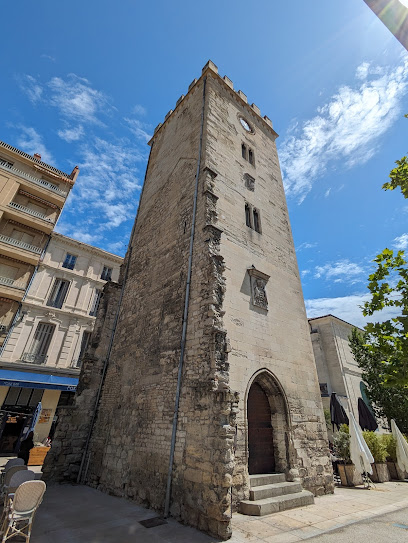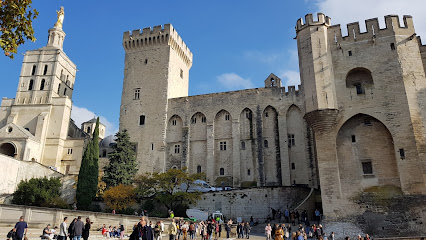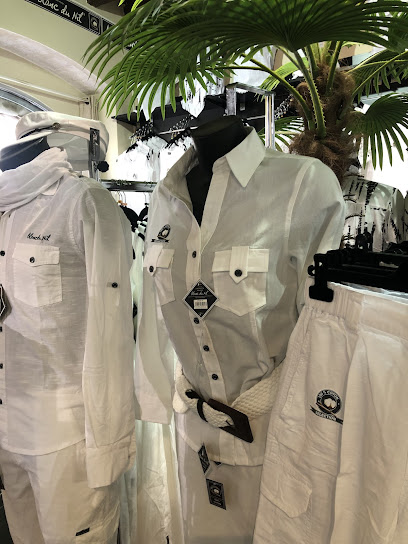
Palais des Papes: The Majestic Heart of Avignon
Discover the grandeur of the Palais des Papes in Avignon, where history, culture, and stunning architecture come together in a vibrant, historic neighborhood.
Nestled in the historic city of Avignon, the Palais des Papes is an awe-inspiring fortress and a UNESCO World Heritage site. Built in the 14th century, this grand palace served as the residence of the Popes during the Avignon Papacy. Its towering walls and Gothic architecture are a testament to its historical significance and the power it once held. Inside, visitors can explore the grand ceremonial rooms, private papal apartments, and the scenic terraces offering panoramic views of Avignon and the Rhône River. The palace also houses a museum with medieval frescoes and artifacts, providing a glimpse into the rich cultural and religious history of the region. Beyond the walls of the Palais des Papes, the surrounding neighborhood is a vibrant area filled with charming cafes, boutique shops, and lively squares. The historic streets are perfect for a leisurely stroll, offering plenty of opportunities to soak in the local culture and enjoy the picturesque scenery.
Local tips in Palais des Papes
- Visit early in the morning to avoid crowds and enjoy a peaceful experience.
- Check for guided tours to gain deeper insights into the history and architecture.
- Wear comfortable shoes as the area involves a lot of walking on cobblestone streets.
- Don't miss the panoramic views from the terraces for great photo opportunities.
- Explore the nearby Place de l'Horloge for dining and entertainment options after your visit.
Palais des Papes: The Majestic Heart of Avignon
Nestled in the historic city of Avignon, the Palais des Papes is an awe-inspiring fortress and a UNESCO World Heritage site. Built in the 14th century, this grand palace served as the residence of the Popes during the Avignon Papacy. Its towering walls and Gothic architecture are a testament to its historical significance and the power it once held. Inside, visitors can explore the grand ceremonial rooms, private papal apartments, and the scenic terraces offering panoramic views of Avignon and the Rhône River. The palace also houses a museum with medieval frescoes and artifacts, providing a glimpse into the rich cultural and religious history of the region. Beyond the walls of the Palais des Papes, the surrounding neighborhood is a vibrant area filled with charming cafes, boutique shops, and lively squares. The historic streets are perfect for a leisurely stroll, offering plenty of opportunities to soak in the local culture and enjoy the picturesque scenery.
Iconic landmarks you can’t miss
Palais des Papes
Explore the majestic Palais des Papes in Avignon, a Gothic masterpiece and a pivotal historical landmark of the papacy's grandeur.

Palais du Roure
Explore the rich history and culture of Provence at Palais du Roure, Avignon's captivating museum and cultural hub.

Tour Saint Jean
Experience the historical allure of Tour Saint Jean in Avignon, a stunning landmark that showcases the rich architectural heritage of France.

Gardens at the Popes’ Palace
Discover the serene beauty of the Gardens at the Popes' Palace in Avignon, where nature meets history in an enchanting setting.

Galerie Du Palais Des Papes
Discover the rich history and stunning architecture of the Galerie Du Palais Des Papes, a UNESCO World Heritage site in the heart of Avignon.

Place du Palais
Explore the vibrant Place du Palais, a historic town square in Avignon, surrounded by stunning architecture and lively cafés, perfect for cultural immersion.

Unmissable attractions to see
Musée Angladon
Explore the captivating collection of Musée Angladon in Avignon, featuring masterpieces from renowned artists in a beautifully restored setting.

Remparts d'Avignon
Discover the awe-inspiring Remparts d'Avignon, a UNESCO World Heritage site that embodies the rich history and stunning architecture of medieval France.

Belvédère Panoramique du Rhône
Discover the stunning panoramic views of the Rhône River at Avignon's Belvédère Panoramique du Rhône, a must-visit observation deck for every traveler.

Essential places to dine
Le Vintage
Experience exquisite modern French cuisine at Le Vintage in Avignon, where culinary artistry meets a cozy ambiance.

Le Carré du Palais
Experience exquisite French cuisine and local wines at Le Carré du Palais in Avignon – where tradition meets contemporary flair.

Restaurant L'Épicerie
Experience authentic French cuisine with Provençal flair at Restaurant L'Épicerie in Avignon - where every meal is a celebration of flavor.

La Cuisine de Papa
Experience the essence of French gastronomy at La Cuisine de Papa in Avignon – where traditional flavors meet modern culinary artistry.

Restaurant SEVIN
Experience exquisite French cuisine at Restaurant SEVIN in Avignon—where culinary artistry meets Provençal charm.

Le Moutardier du Pape
Experience the art of fine dining at Le Moutardier du Pape, where exquisite flavors meet stunning ambiance in Avignon.

Le Goût du Jour
Discover the essence of modern French cuisine at Le Goût du Jour in Avignon - where each dish is a masterpiece.

Restaurant Le Coin Caché
Experience authentic French cuisine at Restaurant Le Coin Caché in Avignon - where every dish tells a story.

Le Restaurant - La Mirande
Experience exquisite Provençal cuisine in an elegant setting at Le Restaurant - La Mirande in Avignon.

Carre des papes
Experience authentic French cuisine at Carre des Papes in Avignon - where tradition meets modern elegance in every bite.

Markets, malls and hidden boutiques
French Retailers
Embrace the essence of French fashion at French Retailers in Avignon - where style meets local charm and vibrant culture.

CASA Avignon
Explore CASA Avignon for unique gifts, stylish home goods, and charming garden furniture in the heart of Avignon.

Les Demoiselles d'Avignon
Discover unique handmade gifts and local crafts at Les Demoiselles d'Avignon, where creativity meets the heart of Provence.

American Vintage
Explore unique clothing styles at American Vintage, a chic boutique in Avignon, showcasing quality apparel with vintage flair.

Lou en Provence
Explore Lou en Provence, a charming clothing store in Avignon, offering Provencal-inspired fashion and unique accessories to elevate your style.

Avignon en Provence
Discover the flavors of Provence at Avignon en Provence, a charming gift basket store filled with local delicacies and unique souvenirs.

Coté Provence
Explore Coté Provence, Avignon's charming souvenir store filled with local crafts, delicacies, and the essence of Provence.

La Licorne du Palais
Explore Avignon's enchanting La Licorne du Palais, a unique gift shop and used book store filled with treasures waiting to be discovered.

un coin de Provence
Explore the essence of Provence at Un Coin de Provence, your go-to gift basket store in the heart of Avignon, featuring local specialties and artisanal treasures.

Tableau et pendantifs
Explore the charm of Avignon at Tableau et pendantifs, a delightful gift shop offering unique local crafts and souvenirs.

Essential bars & hidden hideouts
Le Carré du Palais
Discover the charm of Le Carré du Palais, Avignon's premier wine bar and restaurant, offering a delightful fusion of local wines and exquisite cuisine.

Opéra Café
Discover the charm of Opéra Café in Avignon, where delightful French cuisine meets an inviting atmosphere for an unforgettable dining experience.

The Red Sky
Experience the vibrant nightlife of Avignon at The Red Sky, where delightful drinks and a welcoming atmosphere await you.

Beer O'Clock
Discover the lively atmosphere of Beer O'Clock in Avignon, where great beer meets delightful company in a charming beer hall setting.

In & Off
Unwind at In & Off, a vibrant bar and restaurant in Avignon offering delicious local cuisine and a lively atmosphere.

Barberousse Avignon
Experience the vibrant nightlife of Avignon at Barberousse, where quality drinks and a lively atmosphere await.

TAPIS ROUGE
Discover the charm of Avignon at Tapis Rouge, a cozy wine bar offering an exquisite selection of local and international wines.

Pub Z
Discover the heart of Avignon at Pub Z, where cozy ambiance meets delightful drinks and warm hospitality.

Arte Bar
Discover Arte Bar: a lively bar and amateur theater in Avignon, offering delicious food, refreshing drinks, and captivating performances.

Le Palais Royal
Discover the exquisite flavors and sophisticated ambiance at Le Palais Royal, a premier bar and restaurant in the heart of Avignon.

Local Phrases
-
- HelloBonjour
[bon-zhoor] - GoodbyeAu revoir
[oh ruh-vwahr] - YesOui
[wee] - NoNon
[noh] - Please/You're welcomeS'il vous plaît/De rien
[see voo pleh/dee ree-ehn] - Thank youMerci
[mehr-see] - Excuse me/SorryExcusez-moi/Désolé
[ex-kew-zay mwah/day-zoh-lay] - How are you?Comment ça va?
[koh-mohn sah vah] - Fine. And you?Bien. Et toi?
[byen/eh twah] - Do you speak English?Parlez-vous anglais?
[par-lay voo ahn-glay] - I don't understandJe ne comprends pas
[zhuh nuh kohm-prahnd pah]
- HelloBonjour
-
- I'd like to see the menu, pleaseJe voudrais voir la carte, s'il vous plaît
[zhuh voo-dray vwar lah kart, see voo pleh] - I don't eat meatJe ne mange pas de viande
[zhuh nuh mahnj pah duh vyand] - Cheers!Santé!
[sahn-tay] - I would like to pay, pleaseJe voudrais payer, s'il vous plaît
[zhuh voo-dray pay-ay, see voo pleh]
- I'd like to see the menu, pleaseJe voudrais voir la carte, s'il vous plaît
-
- Help!Au secours!
[oh suh-koor] - Go away!Allez-vous en!
[ah-lay voo ahn] - Call the Police!Appelez la police!
[ah-pay-lay lah poh-lees] - Call a doctor!Appelez un médecin!
[ah-pay-lay uh may-suh-dan] - I'm lostJe suis perdu
[zhuh swee pair-doo] - I'm illJe suis malade
[zhuh swee mah-lahd]
- Help!Au secours!
-
- I'd like to buy...Je voudrais acheter...
[zhuh voo-dray ash-tay...] - I'm just lookingJe regarde juste
[zhuh ruh-gard zhoost] - How much is it?Combien ça coûte?
[kohm-byen sah koot] - That's too expensiveC'est trop cher
[say troh shair] - Can you lower the price?Pouvez-vous baisser le prix?
[poo-vay voo bay-say luh pree]
- I'd like to buy...Je voudrais acheter...
-
- What time is it?Quelle heure est-il?
[kehl ur eh-teel] - It's one o'clockIl est une heure
[eel eh tewn ur] - Half past (10)Dix heures et demie
[dees ur ay duh-mee] - MorningMatin
[mah-tahn] - AfternoonAprès-midi
[ah-pray mee-dee] - EveningSoir
[swahr] - YesterdayHier
[ee-air] - TodayAujourd'hui
[oh-zhoor-dwee] - TomorrowDemain
[duh-mahn] - 1Un
[uhn] - 2Deux
[duh] - 3Trois
[twah] - 4Quatre
[kah-truh] - 5Cinq
[sank] - 6Six
[sees] - 7Sept
[set] - 8Huit
[wheat] - 9Neuf
[nuff] - 10Dix
[dees]
- What time is it?Quelle heure est-il?
-
- Where's a/the...?Où est le/la...?
[oo eh luh/lah] - What's the address?Quelle est l'adresse?
[kehl eh lah-dress] - Can you show me (on the map)?Pouvez-vous me montrer (sur la carte)?
[poo-vay voo muh mohn-tray (surr lah kart)] - When's the next (bus)?Quand est le prochain (bus)?
[kahnd eh luh proh-shahn (bus)] - A ticket (to ....)Un billet (pour ...)
[uhn bee-yay (poor ...)]
- Where's a/the...?Où est le/la...?
History of Palais des Papes
-
The Palais des Papes, or Palace of the Popes, was built in the 14th century during the Avignon Papacy, a period when seven successive popes resided in Avignon instead of Rome. Construction began in 1252 under Pope Clement V and the palace is a monumental representation of the power of the papacy during this time, showcasing Gothic architecture that was unprecedented and highly influential.
-
The period known as the Avignon Papacy lasted from 1309 until 1377, when the popes resided in Avignon due to political conflicts in Italy. This era marked the height of the Palais des Papes' significance, as it became the center of the Catholic Church and European politics. The palace housed not only the popes but also their courts, administrative offices, and a large number of clergy.
-
During the 14th century, the Palais des Papes was a hub of artistic and cultural activity. The popes commissioned numerous works of art, including frescoes and sculptures, contributing to the development of Gothic art and architecture in France. The palace itself is adorned with beautiful chapels and rooms that reflect the grandeur of the papacy and the artistic vibrancy of the period.
-
Following the return of the papacy to Rome, Avignon remained significant during the Great Schism, when rival popes were elected in both Rome and Avignon. This division created a controversial period in the Church's history, impacting the Palais des Papes and leading to its eventual decline as a papal residence. The schism was marked by political intrigue and power struggles that affected the entire region.
-
After the schism and the return of the papacy to Rome, the Palais des Papes saw a gradual decline. The palace was repurposed for various uses, including military barracks, and suffered from neglect. By the 18th century, its grandeur was diminished, but it continued to be a symbol of Avignon's rich historical legacy.
-
In 1995, the Palais des Papes was designated a UNESCO World Heritage Site due to its historical significance and architectural magnificence. This recognition has helped to preserve the palace and has made it a key tourist attraction, drawing visitors from around the world to explore its vast halls and learn about its storied past.
Palais des Papes Essentials
-
The Palais des Papes is centrally located in Avignon. If you're arriving by train, Avignon's TGV station is about 15 minutes away by taxi or local bus. From the Avignon Centre train station, you can walk to the Palais in approximately 20 minutes. The city is also well-connected by regional buses that service nearby towns. If you're coming from other neighborhoods in Avignon, local buses and trams can efficiently get you close to the Palais.
-
Palais des Papes is in a pedestrian zone, making it easy to explore on foot. Bicycles can be rented from various local shops, and there are bike lanes throughout the city. If you prefer public transport, local buses operate regularly, and there are designated stops near the Palais. Taxis are available but may be less necessary due to the compact nature of the neighborhood.
-
Avignon is generally safe for tourists, but it's wise to stay alert, especially in crowded areas. Pickpocketing can occur, particularly near major attractions like the Palais des Papes and the Pont Saint-Bénézet. Avoid poorly lit alleys at night and be cautious of your belongings in busy markets. While there are no specific high-crime areas targeting tourists, common sense precautions should always be taken.
-
In case of an emergency, dial 112 for police, fire, or medical assistance. The local hospital is Hôpital d'Avignon, located a short distance from the Palais. Pharmacies are also available nearby for minor health issues. Always carry a copy of your passport and any necessary medical information in case of emergencies.
-
Fashion: Do dress modestly, especially when visiting the Palais and other religious sites. Avoid overly casual attire. Religion: Do respect local customs; photography may be restricted in certain areas. Public Transport: Do be polite and give up your seat to those in need. Don't eat or drink on public transport. Greetings: Do greet locals with a friendly 'Bonjour' during the day. Eating & Drinking: Do savor local wines and cuisine, and don't rush your meals; dining is a leisurely experience.
-
To experience Palais des Papes like a local, try to attend a guided tour that includes stories about its history and architecture. Visit nearby cafés for a leisurely coffee and people-watching. Check out local markets, especially Les Halles, for fresh produce and regional delicacies. Engage with locals; they often have fascinating insights and recommendations. Lastly, consider visiting during off-peak hours to avoid crowds and enjoy a more intimate experience.
Nearby Cities to Palais des Papes
-
Things To Do in Nîmes
-
Things To Do in Aix-en-Provence
-
Things To Do in Montpellier
-
Things To Do in Marseille
-
Things To Do in Grenoble
-
Things To Do in Saint-Tropez
-
Things To Do in Cannes
-
Things To Do in Nice
-
Things To Do in Lyon
-
Things To Do in Les Moneghetti
-
Things To Do in Moneghetti
-
Things To Do in Fontvieille
-
Things To Do in La Condamine
-
Things To Do in Monaco-Ville
-
Things To Do in Monte Carlo











